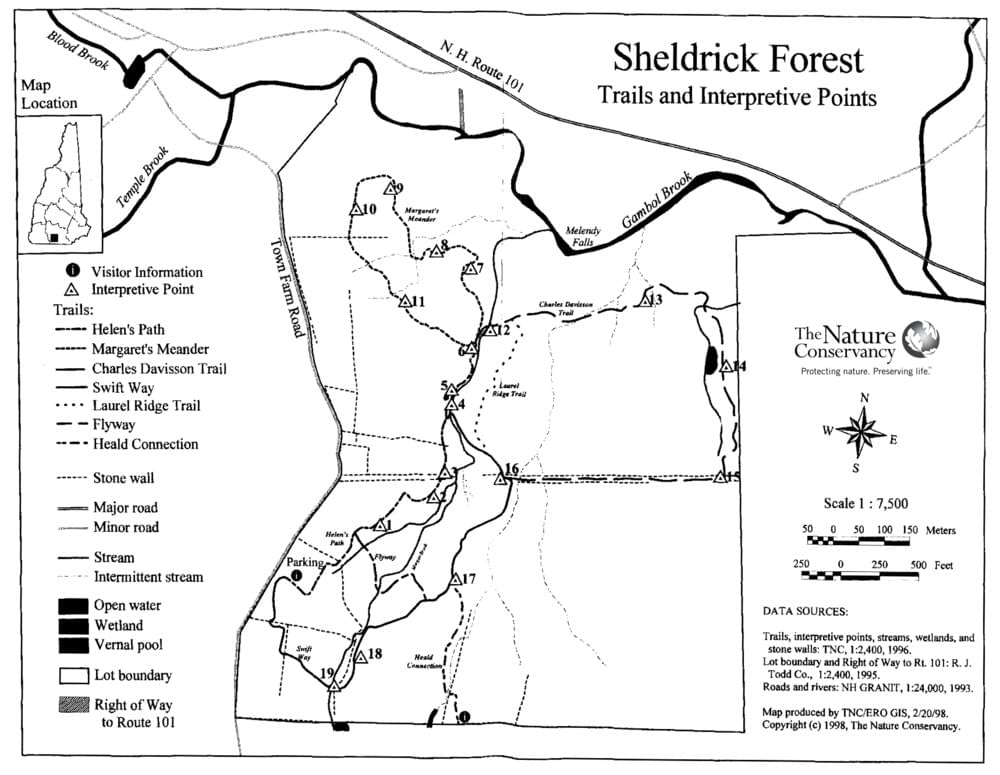Sheldrick Forest Preserve, Wilton
Sheldrick Forest Preserve, Wilton
Wilton, New Hampshire 03086
Official WebsiteSheldrick Forest Preserve brochure and map
About this Location
Before European settlement, New Hampshire’s valleys were covered in mature forests of centuries-old, 200-foot-high trees. Almost all of that forest was cleared for timber or pasture by the mid-1800s, making mature forests a rare commodity today. Walking into the mature groves in the 227-acre Sheldrick Forest in Wilton is like stepping back in time, its cathedral-like stands of 150-foot high white pines, hemlocks, and oaks provide a glimpse into the pre-settlement wilderness that once stretched across New England. Sheldrick Forest contains trees that reach diameters of 30 inches and have escaped logging for close to 200 years.
The preserve’s rolling topography includes several eskers, a ravine forest, seeps, and streams, adding to its wild character. Sheldrick Forest is part of a larger conservation landscape of unbroken forest including the Forest Society’s more than 1,000-acre Heald Tract. These large and unfragmented forests provide breeding habitat for interior forest nesting birds like wood thrushes, ovenbirds, and scarlet tanagers, along with uplands, streams, and wetlands for wide-ranging mammals like black bears and moose to find food, shelter, and cover.
Exploring the Sheldrick Forest is an easy-to-moderate endeavor on the preserve’s 3.8 miles of trails. From the parking area, Helen’s Path drops into the valley of large trees along Morgan’s Brook. The Laurel Ridge Trail climbs an esker ridge that overlooks Morgan Brook and a steep ravine making it a great place to observe the beauty of the forest. Other trails meander throughout the preserve, while the Heald Connection links Sheldrick Forest to another six miles of hiking trails on the Forest Society’s Heald Tract.
Notable Trails
The AllTrails website has a description and map of a hike at Sheldrick Forest Preserve.
Features
Restrooms on site
Wheelchair accessible trail
Entrance fee
Content from Official Website
Last updated October 22, 2023
